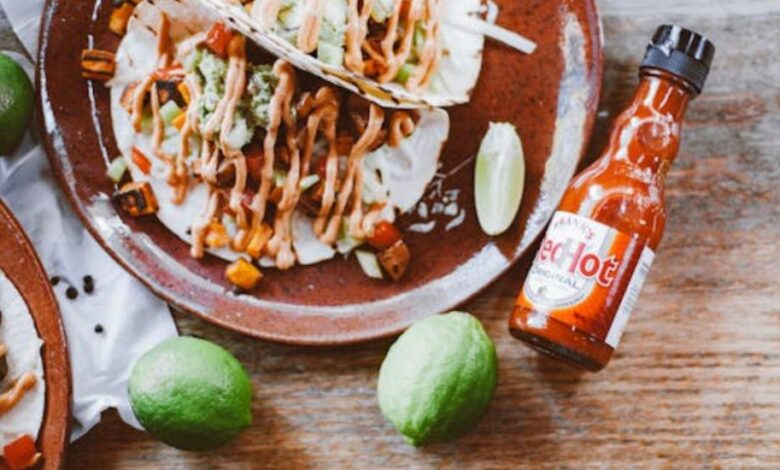Discovering the World of Spicy Meals: A Culinary Journey

Spicy meals are much more than just dishes that pack a punch—they represent a bold and flavorful approach to cooking that spans cultures and regions around the globe. From the fiery heat of Southeast Asian curries to the rich, spiced stews of Africa, spicy food is a universal favorite that brings excitement to the dining table. The combination of spices not only enhances flavors but can also have various health benefits, making spicy meals a unique culinary experience worth exploring.
The Cultural Significance of Spicy Meals
Spicy meals are deeply rooted in the culinary traditions of many cultures. In countries like India, Mexico, and Thailand, spices such as chili, ginger, and pepper are integral to traditional dishes. Indian cuisine, for example, is known for its wide range of spices like turmeric, cumin, and coriander, which create complex and layered flavors. Meanwhile, Mexican dishes such as enchiladas or salsa verde are often characterized by the bold use of chili peppers. Thai food, too, is famous for dishes like Tom Yum soup, where chili paste and fresh herbs work together to create a spicy, aromatic broth.
Each region has its own preferred levels of spiciness and ways of balancing the heat with other flavors such as sour, sweet, or umami. These regional preferences reflect the climate, agriculture, and culinary history of the area, demonstrating how intertwined food and culture are.
Health Benefits of Spicy Meals
One surprising aspect of spicy meals is their potential health benefits. Spices such as chili peppers contain capsaicin, the compound responsible for their heat. Capsaicin has been linked to several health benefits, including boosting metabolism, improving digestion, and even releasing endorphins that can create a sense of euphoria. Additionally, the anti-inflammatory properties of spices like turmeric and ginger can aid in reducing inflammation and promoting overall health.
Moreover, spicy meals may help with weight management. Capsaicin has been shown to increase thermogenesis, the process by which the body generates heat and burns calories. As a result, eating spicy meals may slightly boost your metabolism, making them a delicious way to complement a healthy lifestyle.
The Science Behind the Heat
What makes spicy meals so hot? It all comes down to a compound called capsaicin, found in chili peppers. When consumed, capsaicin triggers the TRPV1 receptors in our mouths, which send signals to the brain that we are experiencing heat or pain. This reaction is what gives us the sensation of heat when eating spicy food, even though the temperature of the dish hasn’t changed.
The “spicy” sensation varies depending on the type of chili used. For example, jalapeños provide a moderate heat level, while habaneros or ghost peppers are among the hottest chilies in the world. Different cuisines use various spices to achieve their unique levels of heat, from the sharpness of black pepper to the deep, lingering burn of cayenne.
Popular Spicy Dishes From Around the World
Spicy meals come in all forms, from stews and soups to street food and snacks. Here are a few popular spicy dishes that showcase the diversity of spicy cuisine:
- Sichuan Hot Pot (China): Known for its intense spiciness, this dish features a bubbling pot of broth filled with Sichuan peppercorns and chilies. Diners dip thin slices of meat and vegetables into the broth, cooking them at the table and enjoying the intense heat.
- Vindaloo (India): A fiery curry from the region of Goa, vindaloo is traditionally made with pork marinated in vinegar, garlic, and a blend of hot spices. It is one of the spiciest dishes in Indian cuisine and has become a favorite among heat seekers.
- Jerk Chicken (Jamaica): This Caribbean dish is famous for its spicy marinade made with scotch bonnet peppers, allspice, thyme, and cinnamon. The chicken is grilled to perfection, with the spices deeply penetrating the meat.
- Kimchi (Korea): This fermented vegetable dish, typically made with napa cabbage and radishes, is spiced with red chili flakes and other seasonings. Kimchi is a staple of Korean cuisine and is enjoyed for its tangy, spicy flavor.
Spicy Meals in Modern Cuisine
In recent years, spicy food has seen a resurgence in popularity. From spicy chicken sandwiches to ghost pepper sauces, there’s been a growing trend of incorporating heat into everyday meals. Many food enthusiasts enjoy experimenting with different levels of spiciness, pushing their tolerance limits while exploring new and exciting flavors. The rise of spicy food challenges, such as the Carolina Reaper challenge, demonstrates the cultural fascination with heat.
In modern cuisine, chefs are also experimenting with spicy flavors, combining traditional spices with new cooking techniques to create fusion dishes. For example, spicy tuna rolls in Japanese cuisine or buffalo-style wings in American cuisine blend heat with savory and sweet elements to create balanced, crowd-pleasing dishes.
Cooking Spicy Meals at Home
For those who love a spicy kick in their meals, cooking spicy dishes at home can be an enjoyable and rewarding experience. The key to making a flavorful spicy meal is balancing the heat with other flavors like acidity, sweetness, or fat. Here are a few tips for making spicy meals at home:
- Start Small: If you’re new to cooking with spices, start with milder chilies like poblano or ancho peppers before working your way up to hotter varieties.
- Balance is Key: Combine spicy ingredients with creamy or sweet elements to temper the heat. For example, add coconut milk to a spicy curry or honey to a chili sauce for balance.
- Experiment with Different Spices: Don’t just rely on chili peppers for heat. Spices like ginger, garlic, black pepper, and cumin can all add complexity and layers of flavor to your dishes.
- Taste as You Go: Since spiciness can build up quickly, taste your dish frequently to ensure the heat level is where you want it.
Final Thoughts on Spicy Meals
Spicy meals are more than just a culinary challenge—they offer a vibrant world of flavors that can be appreciated by food lovers of all kinds. Whether you’re enjoying a traditional dish from a faraway land or experimenting with spicy ingredients in your kitchen, spicy meals invite you to embark on a bold and flavorful journey. From health benefits to cultural significance, these meals continue to capture the hearts and palates of people across the globe.
So, the next time you feel adventurous, try adding some spice to your life and savor the delicious thrill that spicy meals have to offer!



